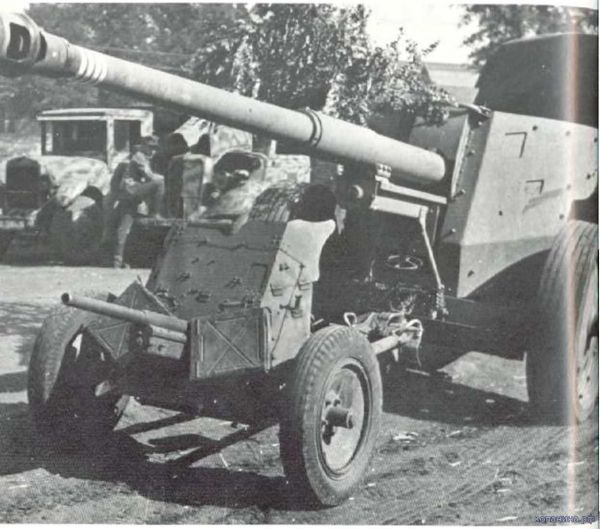| Главная » Статьи » Артиллерия |
GERMAN ANTI-TANK GUNS 37mm - 50mm - 75mm - 88mm PAK
|
The Origins of a New Weapon—PAK  The German military leadership—just like all foreign military staffs—promoted antitank guns for the infantry on the basis of World War I experience. These new guns, which could be called cannons, were to achieve good results at medium ranges. To do this, certain technical problems had to be surmounted: high penetrating power of the shell {depending on initial velocity) and rapid rate of fire, low construction of the gun, great mobility and high traverse field of the barrel. The Treaty of Versailles did not allow the German Reich to produce such a vvcajmn. Only the Rheinmetall-Borsig AG firm was allowed to produce guns up to a caliber of 170mm. Only after the French troops evacuated the occupied Rheinland in 192Г» and the Allied Control Commission began to dissolve did the production of new weapons begin in the course of general rearmament. Fhe Rheinmetall-Borsig AG began that same year to design, develop and produce a 37mm gun that was intended for antitank use. Production began in 1928. Individual parts of the guns were made in various smaller shops and assembled in the assembly halls of Rheinmetall-Borsig AG. Between 1928 and 1933 some 200 37mm caliber guns could be produced. They were originally designated ТАК (Tankabwehrkanone). In several branches of the Rcichswehr there w ere already companies armed with this gun at the beginning of the Thirties. Ггот them there developed as of 1931 the first antitankunits. The service-arm color of these new units was rose pink (as was that of the armored troops). Their shouldei flaps held a large letter P to differentiate them from other troops with rose piping. The 14th (Antitank) Company of the Infantry regiments, established later, retained the while service-arm color of the infantry  The 37mm Рак  The gun introduced to the troops in 1934-35 was. in its low and easily maintained form, a quickly mobile gun easily moved by a four- man crew. It was even possible—unlike previous light guns—to pull the 37min Так over ditches or up slopes by manpower. The gun had the following weights and measures: Weight ready to fire: 330 kg Overall length: 3.40 meters Including barrel length (max.): 1.66 meters Aiming field of the barrel in elevation: -8 to +25 degrees in traverse: 60 degrees Ammunition: antitank shells Weight: 0.65 kg Muzzle velocity: 760 meters per second Armor penetration: 36 mm at 500 meters It had a spreading mount and shield, and could he towed by a motor vehicle, horses or manpower. The gun’s wheels were made of wood and bore rubber tires. The first trials in the field (maneuvers, etc.) showed that the 37mm Так was good but could still be improved. Thus an improved gun was built by the Kheinmetall-Borsig AG with help and support from the Army Weapons Office. This was officially designated “37mm Pak 35/36.” In the process, the new abbreviation was introduced: Pak (Panzerabwehrkanonc). The 37mm Pak 35 36 had a gross weight of 150 kilograms. The barrel had an overall length of 1.66 meters, of which 1.31 meters were rifled. The combustion chamber  | |
| Просмотров: 4405 | | |
| Всего комментариев: 0 | |